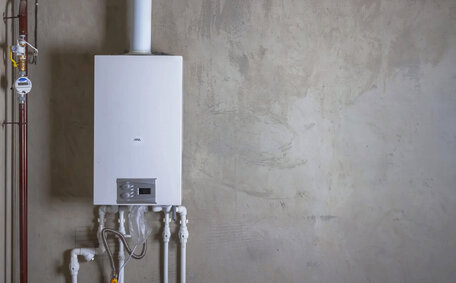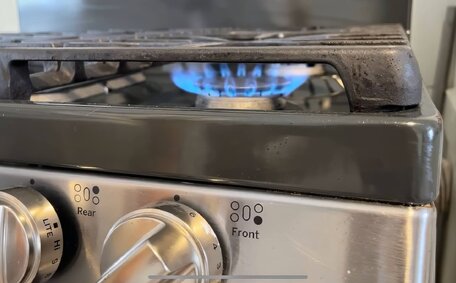Introduction to Hot Water Systems and Optimal Settings
Your water heater is essential in your home, supplying hot water for daily tasks like bathing and cleaning. Yet many homeowners overlook seasonal changes that significantly affect their system’s efficiency and safety. This article will highlight the importance of energy efficiency by adjusting your hot water system settings based on the time of year.
In summer, lower your water heater’s temperature to cut energy use, reduce bills and prevent overheating when demand is lower.
During winter, adjusting your thermostat ensures ample hot water and curtails health risks such as bacterial growth. We’ll explore optimal temperature settings, energy-saving strategies, safety measures, and how to determine if seasonal adjustments are necessary.
Understanding Temperature, Safety, and Efficiency
Store hot water above 50 degrees Celsius to hinder Legionella bacteria growth and prevent Legionnaires’ disease. Using a tempering valve is essential to moderate your system’s output by blending in cold water to achieve safer temperatures.
Settings over 60 degrees Celsius pose scalding risks, especially for vulnerable individuals like children and seniors.
Insulate hot water pipes to prevent heat loss, reduce reheating and manage energy better in your home. This refinement in energy use leads to decreased expenses, especially for homes with electric water heaters, and optimal control of your water heater temperature. Studies show that insulating hot water pipes can reduce heat loss by 75-90%, translating into significant energy savings.
Optimise energy usage by setting your water heater or heat pump to a lower temperature in summer to maintain efficiency and safety. Understanding how much you can save, note that for every 10 degrees Celsius reduction on your heater set temperature, you can save 3-5% on water heating costs, effectively reducing your energy consumption. Ensure your system stays above 50 degrees Celsius to prevent bacterial growth and maintain health standards.
Preventing Health Risks Like Legionella and Scalding
Maintaining the appropriate temperature is key for your system’s efficiency and safety, preventing bacteria growth and scalding risks. Store water at 60-65°C to limit Legionella risk, while avoiding scalding hazards below and above 50°C.
The introduction of tempering valves or anti-scald devices, of which there are two main types, into systems equipped with water heaters can significantly uplift safety measures can help prevent scalding by mixing cold water back into the system to reduce very hot water down to a safer temperature of 50°C before it exits taps. These valves ensure safe tap water with the anti-bacterial benefits of higher temperatures while shielding against scalding.
Legionella bacteria growth is checked when water tanks maintain temperatures adequately regulated, typically above 50°C, thereby preventing the bacteria from multiplying in household water systems.
Maintaining your hot water storage at least 60°C, or higher, remains essential even during periods of low demand, such as in the warmer months, to ensure safety and performance. Pump hot water usage mixed with short bursts of high temperatures reduces chances of Legionella overgrowth in your system.
Seasonally Adjusting Settings for Efficiency and Comfort
Adjusting your water heater seasonally boosts both efficiency and comfort. Many contemporary units are equipped with weather-compensation mechanisms; your system also adapts the water warmth in response to external climate conditions.
Lower the temperature in summer to save energy and avoid hot water wastage while still preventing Legionella growth. This can reduce electricity or gas usage for heat pump hot water heating by 5-10%. In the colder months of winter’s heightened demand, ramp up to 60-65°C to ensure an ample hot water supply and prevent bacteria.
When extreme weather strikes, It’s crucial to find the right balance for your household’s needs. In hot summers, a lower limit of 55°C may suffice, while in harsh winters, a higher setting of 70°C could be necessary. Just take precautions against scalding.
Turn off your hot water system while on holiday to maximize energy savings. And ensure good insulation on external pipes and hot water tank to reduce standby heat losses in all seasons.
Insulating Pipes to Maintain Temperature
Insulating your pipes is a wise safety step to keep water temperatures consistent from the heater to your taps and devices. Bare pipes lose a significant amount of heat, resulting in colder electric water by the time it reaches you.
Insulation acts as a barrier to lock in heat and prevent temperature loss, leading to reduced energy needs for reheating.
Commonly used insulation materials for hot water pipes are foam, fibreglass, and polyethylene sleeves. Ensure all hot pipes leading away from your water heater or heat pump are insulated for optimal energy conservation and plumbing functionality.
Proper pipe insulation keeps your water at the right temperature for comfortable showers and appliance efficiency, while reducing heating costs. Contact a professional plumber if you need assistance insulating your home’s hot water delivery system.
Regular Maintenance for Optimal Hot Water System Performance
Regular maintenance and proper adjustment of your hot water system prevent issues, increase efficiency, avoid costly repairs, and extend its service life. This involves periodically checking components like the anode rod, relief valves, filters, and insulation and grasping how adjust them when deemed necessary.
Draining and Flushing
Drain and flush your system annually to eliminate built-up deposits and maintain clean hot water. This process also allows checking for corrosion and removing sediment, which helps prevent conditions that can lead to Legionnaires’ disease.
Replacing Anodes
Water heaters typically have an anode rod to attract corrosion and protect the tank. Checking this sacrificial anode yearly and replacing it when significantly worn prevents premature tank failure. DIY replacement is straightforward if comfortable with basic plumbing.
Testing Temperature and Pressure Relief Valve
Temperature and pressure relief valves are critical safety features in case of excessive buildup in your system. Regularly test these valves to ensure your heater’s temperature complies with health and safety standards. Replace immediately if you find valve problems or leakage.
Checking Insulation
Maintaining insulation on pipes and the unit itself is crucial for optimal efficiency. Repair any damaged or missing insulation. Also ensure insulation joints seal properly without gaps.
Keep your hot water system running effectively in all seasons through periodic maintenance. If puzzlement arises on how to scrutinise or service your gadget, or what your hot water system do when you manipulate the circuit breaker, contact our Glenhaven plumbing professionals.
When to Call a Professional Plumber
While regular maintenance can keep your hot water system running smoothly, certain issues are best left to professional plumbers. Make a swift us call to Glenhaven Plumbing on 1300 349 338 or [email protected] for assistance with:
- Replacing or installing new water heaters
- Repairing malfunctioning valves, elements, thermostats or timers
- Fixing low water flow or pressure problems
- Checking and servicing heat pumps
- Dealing with leaks, bursts or serious faults
- Adjusting the flow rate and tricky thermostat and temperature settings
- Insulating aged or poorly insulated pipes
- Ensuring optimal efficiency and safety of your system
We can guide you in choosing a hot water system suited to your needs and budget. If you’re worried about the functionality, efficiency, or safety of your hot water system, don’t hesitate to contact us.
Conclusion and Summary of Key Points
It’s crucial to adjust your home’s water heater settings seasonally for efficiency, savings, and safety. Below is a summary of the key guidance covered in this article:
- Insulate all external pipes and your hot water tank to significantly diminish standby heat losses by up to 90%
- Lower the thermostat to prevent the temperature from being set too high—50-55°C in warmer months—to conserve 5-10% on water heating costs
- boost to 60-65°C amidst the peak winter usage to ensure hot water is continuously available
- Flush and drain your hot water storage tank annually to clear sediment buildup and enhance performance
- Consider upgrades like smart weather compensation controls for automatic seasonal adjustments
Finding the optimal hot water system settings for efficient energy use over a period of time requires some trial and error, especially when based on seasonal demand. For those needing professional assistance, don’t hesitate to contact Glenhaven Plumbing on 1300 349 338 or at [email protected].
Our fully certified technicians can install new hot water units, perform repairs, provide maintenance, check safety mechanisms, and ensure your home always enjoys an efficient, comfortably heated water supply all year round.





